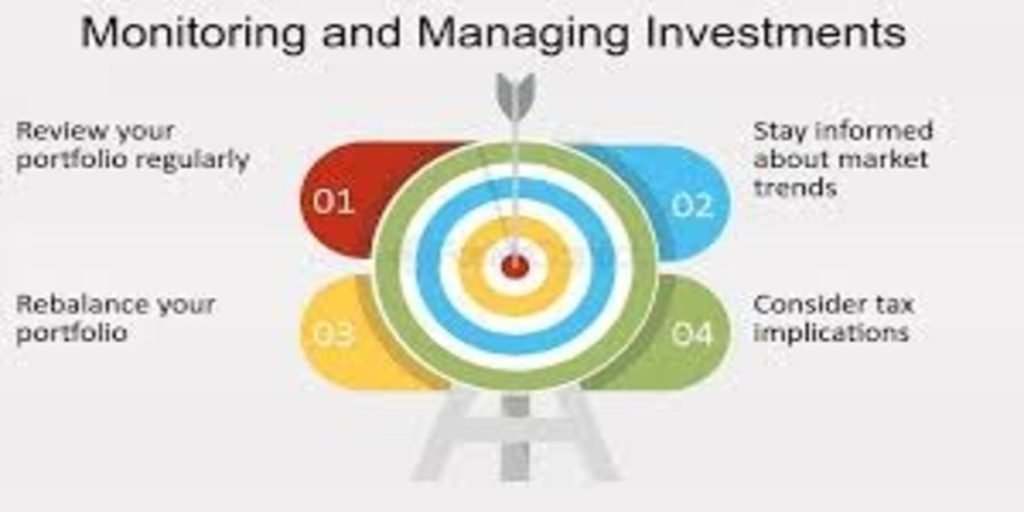Invest in the American Stock Market: A Comprehensive Guide
Investing in the American stock market can be a lucrative endeavor, offering opportunities to grow your wealth and participate in the success of some of the world’s largest companies. This guide will walk you through the steps to invest in the American stock market, from understanding the basics to executing your first trade.
1. Understand the Basics of the Stock Market

The American stock market is composed of major exchanges like the New York Stock Exchange (NYSE) and the NASDAQ. Stocks represent ownership shares in a company, and investors buy and sell these shares on the stock exchanges.
2. Determine Your Investment Goals

Before you start investing, it’s crucial to define your investment goals. Consider the following:
- Time Horizon: Are you investing for the short-term or long-term?
- Risk Tolerance: How much risk are you willing to take?
- Financial Goals: Are you investing for retirement, buying a home, or growing your wealth?
3. Choose a Brokerage Account

To invest in the American stock market, you’ll need to open a brokerage account. Here’s how to choose the right one:
a. Research Brokerages:
- Compare fees, commissions, account minimums, and available investment tools.
- Look for brokerages with a strong reputation and good customer service.
b. Types of Brokerages:
- Full-Service Brokerages: Offer personalized advice but charge higher fees.
- Discount Brokerages: Offer lower fees with minimal or no advisory services, ideal for self-directed investors.
4. Open and Fund Your Brokerage Account

a. Complete the Application:
- Provide personal information, including identification and proof of address.
- Choose the type of account (individual, joint, retirement).
b. Fund Your Account:
- Transfer funds from your bank account to your brokerage account.
- Some brokerages offer a variety of funding options, including bank transfers, wire transfers, and checks.
5. Learn the Types of Investments

a. Individual Stocks:
- Buying shares of individual companies allows you to directly participate in their growth.
- Research companies thoroughly before investing.
b. Exchange-Traded Funds (ETFs):
- ETFs are collections of stocks that track a specific index or sector.
- They offer diversification and lower risk compared to individual stocks.
c. Mutual Funds:
- Mutual funds pool money from multiple investors to buy a diversified portfolio of stocks.
- Managed by professional fund managers, they offer diversification but may have higher fees.
d. Bonds:
- Bonds are debt securities issued by corporations or governments.
- They provide regular interest payments and are generally less risky than stocks.
6. Develop an Investment Strategy

a. Define Your Strategy:
- Decide whether you’ll be a long-term investor or a short-term trader.
- Consider value investing, growth investing, dividend investing, or index investing.
b. Diversify Your Portfolio:
- Spread your investments across different sectors and asset classes to reduce risk.
c. Research and Analysis:
- Use fundamental analysis (company financials, earnings reports) and technical analysis (stock charts, trends) to make informed decisions.
7. Place Your First Trade
a. Choose the Stock or ETF:

- Use your brokerage’s research tools to select an investment.
- Review the company’s performance, market position, and growth prospects.
b. Decide on the Order Type:
- Market Order: Buy or sell immediately at the current market price.
- Limit Order: Set a specific price at which you want to buy or sell.
- Stop Order: Execute a trade when the stock reaches a certain price.
c. Execute the Trade:
- Enter the details of your trade in your brokerage account and confirm the transaction.
8. Monitor and Manage Your Investments

a. Regularly Review Your Portfolio:
- Keep track of your investments and their performance.
- Rebalance your portfolio periodically to maintain your desired asset allocation.
b. Stay Informed:
- Follow market news, economic indicators, and company announcements that may impact your investments.
c. Adjust Your Strategy:
- Be flexible and ready to adapt your strategy based on market conditions and your financial goals.
9. Understand Tax Implications

a. Capital Gains Tax:
- Be aware of taxes on profits from selling stocks. Long-term investments (held for over a year) are usually taxed at a lower rate than short-term investments.
b. Dividends:
- Dividends are subject to tax. Qualified dividends may be taxed at a lower rate than ordinary income.
c. Tax-Advantaged Accounts:
- Consider using retirement accounts like IRAs and 401(k)s to benefit from tax advantages.
10. Seek Professional Advice if Needed

a. Financial Advisors:
- If you’re unsure about your investment strategy or need personalized advice, consider consulting a financial advisor.
b. Educational Resources:
- Use online courses, books, and seminars to enhance your investment knowledge.
The Bottom Line:
Investing in the American stock market can be a rewarding way to build wealth and achieve your financial goals. By following these steps, you can start your investment journey with confidence. Remember to stay informed, keep learning, and adjust your strategy as needed to navigate the dynamic world of stock market investing.
